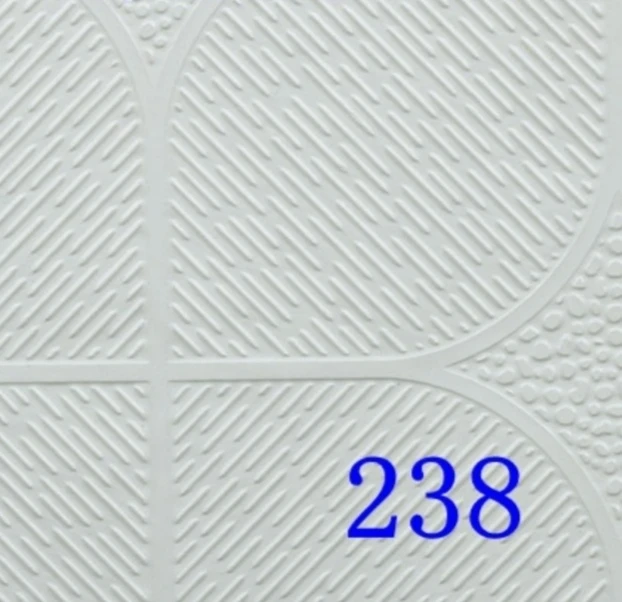- Afrikaans
- Albanian
- Amharic
- Arabic
- Armenian
- Azerbaijani
- Basque
- Belarusian
- Bengali
- Bosnian
- Bulgarian
- Catalan
- Cebuano
- Corsican
- Croatian
- Czech
- Danish
- Dutch
- English
- Esperanto
- Estonian
- French
- German
- Greek
- Hindi
- Indonesian
- irish
- Italian
- Japanese
- Korean
- Lao
- Malay
- Myanmar
- Norwegian
- Norwegian
- Polish
- Portuguese
- Romanian
- Russian
- Serbian
- Spanish
- Swedish
- Thai
- Turkish
- Ukrainian
- Uzbek
- Vietnamese
Ott . 17, 2024 13:34 Back to list
Suspended Ceiling Cross Tee Design for Enhanced Aesthetic and Structural Support
Understanding Suspended Ceiling Cross Tees A Comprehensive Overview
Suspended ceilings, also known as drop ceilings or false ceilings, have become an integral part of modern architectural design, primarily due to their aesthetic appeal and functional benefits. Among the essential components that make up these ceilings are cross tees, which play a pivotal role in the overall structure. In this article, we will delve into the significance of suspended ceiling cross tees, their types, installation process, and advantages, ultimately highlighting their contribution to both commercial and residential spaces.
What are Suspended Ceiling Cross Tees?
Cross tees are horizontal supports that connect to the main tees in a suspended ceiling system. These metal or plastic components create a grid-like framework that supports ceiling tiles or panels. The cross tees come in various lengths and sizes to accommodate different ceiling layouts and design preferences. They work in tandem with main tees to form a stable grid structure that can hold decorative elements, acoustic panels, or lighting fixtures.
Types of Cross Tees
Cross tees are generally categorized into two main types standard cross tees and specialty cross tees.
1. Standard Cross Tees These are the most commonly used cross tees and come in various lengths, usually ranging from 2 feet to 4 feet. They provide fundamental support for ceiling tiles and are available in different finishes, including painted or galvanized steel.
2. Specialty Cross Tees Designed for specific applications, specialty cross tees might have different shapes or features tailored for unique ceiling designs. For instance, some may include built-in illumination capabilities or sound-absorbing materials, enhancing both lighting and acoustics in a space.
Installation Process
Installing suspended ceiling cross tees requires careful planning and execution. Below are the essential steps involved in the installation process
1. Planning Measure the ceiling area and design the layout for the grid. This step involves determining the size and number of main and cross tees required based on the overall design and the size of ceiling tiles.
2. Marking Use chalk lines to mark the grid layout on the ceiling. Ensure that the lines are straight and accurately reflect the design plan.
suspended ceiling cross tee

3. Hanging Main Tees Install the main tees first. These are typically secured to the ceiling joists or framing above using hangers or wires at regular intervals.
4. Fitting Cross Tees Once the main tees are securely in place, insert the cross tees at equal intervals to create a grid. Ensure that they fit snugly into the connectors on the main tees.
5. Placing Ceiling Tiles After the grid is complete, lay down the ceiling tiles or panels. Each tile should fit neatly into the grid, ensuring a uniform appearance.
Advantages of Using Cross Tees
Cross tees provide numerous benefits that contribute to the overall functionality and appearance of suspended ceilings
1. Aesthetic Flexibility With various tile options available, suspended ceilings with cross tees can be customized to suit different themes and design preferences, making them ideal for commercial and residential applications.
2. Acoustic Control Many ceiling tiles used with cross tees are designed to absorb sound, enhancing the acoustics of a room. This is particularly beneficial in offices, theaters, and dining areas where noise levels need to be managed.
3. Easier Maintenance Suspended ceilings allow easy access to plumbing, electrical wiring, and HVAC systems. If maintenance is needed, individual tiles can be removed without disturbing the entire ceiling.
4. Enhanced Lighting Cross tees help accommodate various lighting fixtures, allowing for creative and functional illumination strategies that improve the brightness and aesthetics of a room.
5. Cost-Effectiveness Compared to traditional drywall ceilings, suspended ceilings save time and labor costs in installation and repairs.
Conclusion
Suspended ceiling cross tees play a crucial role in modern building design, blending functionality with aesthetic appeal. Their ability to support various ceiling tiles and accommodate lighting and HVAC systems makes them indispensable in both commercial and residential settings. As architects and builders continue to explore innovative design options, the use of cross tees will likely remain a significant component of suspended ceiling systems, offering a perfect balance between practicality and style.
-
PVC Laminated Gypsum Ceiling Board OverviewNewsApr.11,2025
-
Mineral Fiber Ceiling Tiles Price Analysis and ComparisonsNewsApr.11,2025
-
Crafts of Mineral Fiber Ceiling Tile ManufacturingNewsApr.11,2025
-
Difference Between Gypsum and PVC CeilingNewsApr.11,2025
-
An Overview of Mineral Fiber Ceiling TilesNewsApr.11,2025
-
Advantages of PVC Gypsum CeilingNewsApr.08,2025







